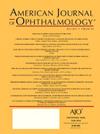Adherence and Persistence on Prostaglandin Analogues for Glaucoma: A Systematic Review and Meta-Analysis
IF 4.1
1区 医学
Q1 OPHTHALMOLOGY
引用次数: 0
Abstract
PURPOSE
To systematically review, synthesize and quantify studies reporting patterns of adherence and persistence with prostaglandin analogues (PGAs) in order to comprehensively understand real-world treatment behavior among patients with glaucoma who are prescribed PGAs. These data can inform the decision between a glaucoma therapy based on either topical PGA medications or procedural PGA-based intervention.
DESIGN
Systematic literature review (SLR) and meta-analysis (MA).
METHODS
We updated a 2011 SLR using electronic database searches (MEDLINE, Embase and the Cochrane Database of Systematic Reviews [CDSR]), supplemented by hand searches of SLR and MA bibliographies. We included observational studies conducted in adult glaucoma patients treated with PGAs that reported objective measures of persistence or adherence. In addition to estimated rates of adherence and persistence, adherence among patients on any/unspecified PGA was characterized by mean MPR/PDC (medication possession ratio/proportion of days covered, where values >80% indicate good adherence). Duration of therapy was defined as the time period between initial therapy prescription and time of therapy discontinuation or switch.
RESULTS
The SLR included 50 publications reporting on 47 unique studies and involving 961,000 patients. The subsequent MA included all but four studies which did not report the age distribution of patients. The mean proportion of patients on any/unspecified PGA who were adherent at Year 1 was 44% (95% CI: 31%-58%). Among patients on any/unspecified PGA, the mean MPR/PDC was 54% (95% CI: 38%-75%) at Year 1 and 60% at Year 2 (95% CI: 39%-94%). The mean proportion of patients on any/unspecified PGA who were persistent fell from 75% (95% CI: 66%-85%) at Month 6 to 31% (95% CI: 12%-55%) at Year 3, with a smaller decrease observed between Year 1 (56%; 95% CI: 45%-66%) and Year 2 (53%; 95% CI: 45%-62%), and a larger decrease between Years 2 and 3. The mean duration on therapy was 315.7 days (95% CI: 190.0%-441.5 days).
CONCLUSIONS
Suboptimal adherence and persistence with PGAs are common, with further decreases as duration lengthens. These findings may underscore the value of procedural glaucoma treatments that do not depend on daily patient engagement with topical medications.
前列腺素类似物治疗青光眼的依从性和持续性:系统回顾与元分析》。
目的:系统回顾、综合并量化报告前列腺素类似物(PGA)依从性和持续性模式的研究,以全面了解开具前列腺素类似物处方的青光眼患者的真实治疗行为。这些数据可为决定青光眼治疗是采用局部前列腺素类似物药物还是基于前列腺素类似物的程序性干预提供依据:系统文献综述 (SLR) 和荟萃分析 (MA) 方法:我们使用电子数据库检索(MEDLINE、Embase 和 Cochrane 系统综述数据库 [CDSR])更新了 2011 年的 SLR,并对 SLR 和 MA 书目进行了人工检索。我们纳入了对接受 PGAs 治疗的成人青光眼患者进行的观察性研究,这些研究报告了对持续性或依从性的客观测量。除了估计的依从性和持续率外,任何/未指定 PGA 患者的依从性还以平均 MPR/PDC(药物持有率/覆盖天数比例,数值大于 80% 表示依从性良好)为特征。治疗持续时间定义为从最初开具治疗处方到停药或更换治疗处方之间的时间段:SLR包括50篇出版物,报告了47项独特的研究,涉及961,000名患者。随后的 MA 包括了除 4 项研究外的所有研究,这些研究没有报告患者的年龄分布。接受任何/未指定 PGA 治疗的患者在第一年坚持治疗的平均比例为 44%(95% CI:31-58%)。在服用任何/未指定 PGA 的患者中,第一年的平均 MPR/PDC 为 54% (95% CI: 38-75%),第二年为 60% (95% CI: 39-94%)。任何/未指定 PGA 持续治疗患者的平均比例从第 6 个月的 75% (95% CI: 66-85%) 降至第 3 年的 31% (95% CI: 12-55%),第 1 年(56%; 95% CI: 45-66%)和第 2 年(53%; 95% CI: 45-62%)之间的降幅较小,而第 2 年和第 3 年之间的降幅较大。平均治疗时间为 315.7 天(95% CI:190.0-441.5 天):结论:对 PGAs 的依从性和持续性不理想的情况很常见,随着疗程的延长,依从性和持续性会进一步下降。这些发现可能凸显了程序性青光眼治疗的价值,这种治疗不依赖于患者每天使用外用药物。
本文章由计算机程序翻译,如有差异,请以英文原文为准。
求助全文
约1分钟内获得全文
求助全文
来源期刊
CiteScore
9.20
自引率
7.10%
发文量
406
审稿时长
36 days
期刊介绍:
The American Journal of Ophthalmology is a peer-reviewed, scientific publication that welcomes the submission of original, previously unpublished manuscripts directed to ophthalmologists and visual science specialists describing clinical investigations, clinical observations, and clinically relevant laboratory investigations. Published monthly since 1884, the full text of the American Journal of Ophthalmology and supplementary material are also presented online at www.AJO.com and on ScienceDirect.
The American Journal of Ophthalmology publishes Full-Length Articles, Perspectives, Editorials, Correspondences, Books Reports and Announcements. Brief Reports and Case Reports are no longer published. We recommend submitting Brief Reports and Case Reports to our companion publication, the American Journal of Ophthalmology Case Reports.
Manuscripts are accepted with the understanding that they have not been and will not be published elsewhere substantially in any format, and that there are no ethical problems with the content or data collection. Authors may be requested to produce the data upon which the manuscript is based and to answer expeditiously any questions about the manuscript or its authors.

 求助内容:
求助内容: 应助结果提醒方式:
应助结果提醒方式:


